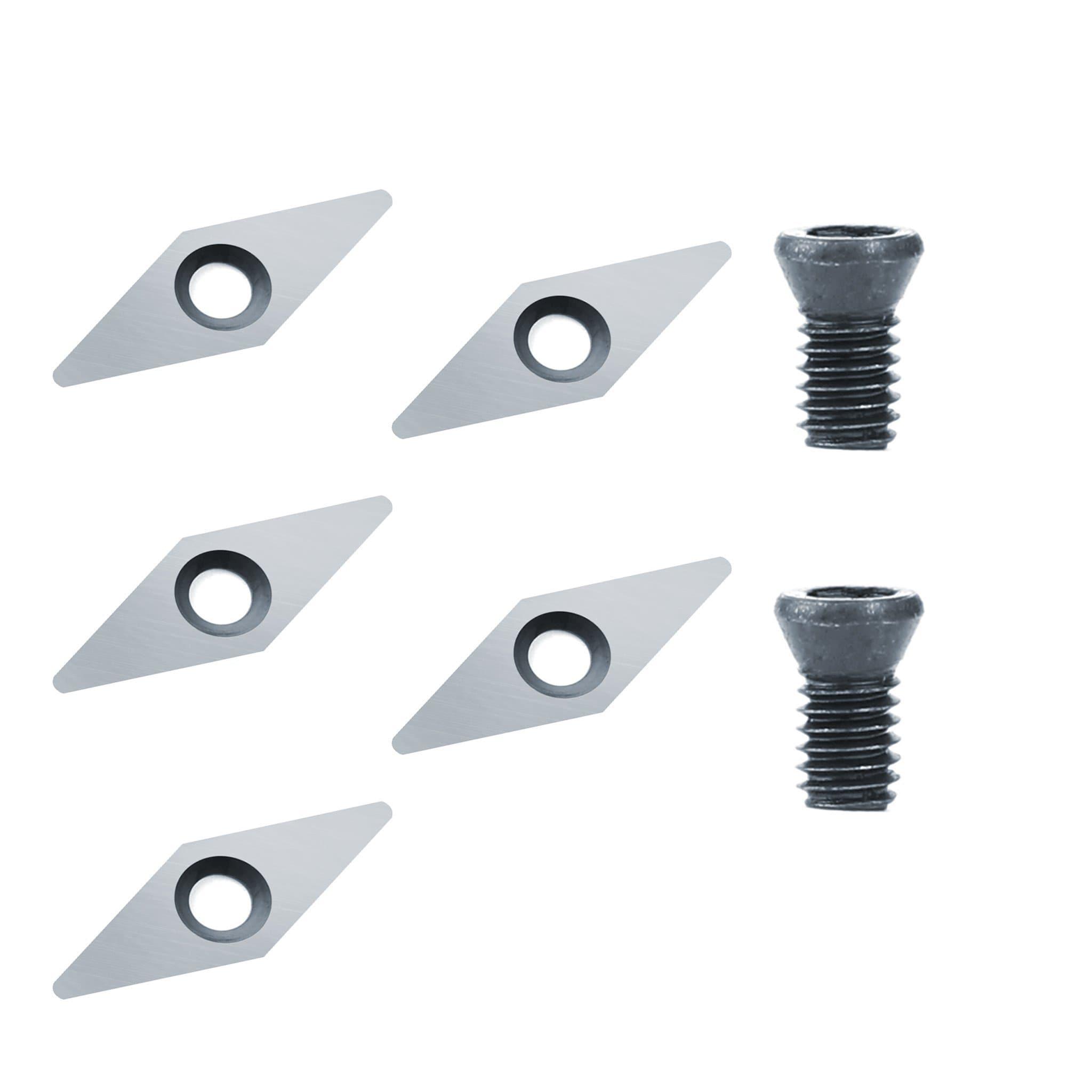

Carbide woodturning cutters are specialized cutting tools used in woodturning, a woodworking technique that involves shaping wood on a lathe. These cutters are designed to be used with woodturning tools, such as carbide-tipped turning tools or specifically designed carbide insert tools.
Carbide woodturning cutters are made from carbide, a compound composed of tungsten and carbon atoms. Carbide is known for its exceptional hardness and wear resistance, making it well-suited for cutting tools. The carbide cutters typically feature a small, replaceable cutting insert that is brazed or clamped onto the tool body.
The cutting inserts of carbide woodturning cutters have multiple sharp edges, allowing for extended use before needing replacement or re-sharpening. These inserts are available in various shapes and angles to accommodate different cutting techniques and woodturning applications. Some common insert shapes include square, round, diamond, and teardrop.
 CARBIDE WOODTURNING CUTTERS | Findbuytool
CARBIDE WOODTURNING CUTTERS | FindbuytoolOne of the key advantages of carbide woodturning cutters is their longevity and durability. The hardness and wear resistance of carbide allow the cutters to maintain their cutting edge for an extended period, reducing the need for frequent sharpening. This is particularly beneficial in woodturning, where the cutting tools are in constant contact with the spinning wood and can experience significant wear.
Another advantage of carbide woodturning cutters is their versatility. The different shapes and angles of the cutting inserts allow turners to achieve a variety of cuts and profiles on the wood. They can be used for roughing, shaping, detailing, and finishing cuts, depending on the specific insert and technique used. Carbide cutters are suitable for both spindle turning (turning long, thin pieces such as chair legs or table legs) and faceplate turning (turning bowls, platters, or other hollow forms).
Carbide woodturning cutters are also known for their ease of use. Unlike traditional high-speed steel (HSS) turning tools that require frequent sharpening and skill in maintaining the cutting edge, carbide cutters can be rotated or replaced when the cutting edge becomes dull. This makes them particularly appealing to beginners or those who prefer a low-maintenance approach to woodturning.
When using carbide woodturning cutters, it's important to consider the cutting parameters and techniques. Carbide is more brittle than HSS, so excessive forces or improper cutting angles can lead to chipping or fracturing of the cutting edges. It's essential to maintain proper cutting technique, use appropriate cutting angles, and avoid excessive pressure during cuts to ensure optimal performance and longevity of the carbide cutters.
In summary, carbide woodturning cutters are cutting tools used in woodturning to shape and create profiles on wood. They are made from carbide, known for its hardness and wear resistance. Carbide cutters offer longevity, durability, and versatility, allowing woodturners to achieve a variety of cuts and profiles. They are particularly suitable for beginners or those seeking low-maintenance tools. However, proper cutting techniques and parameters should be followed to avoid damage to the cutting edges.